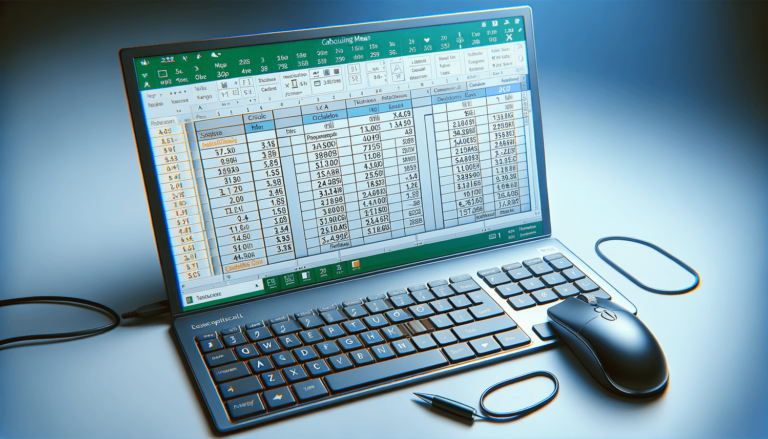

If you need to calculate the mean for a set of data in Excel, you’ve come to the right place. Excel is a powerful tool for performing statistical analysis and the mean is one of the most commonly used measures of central tendency.
In this blog post, we will guide you step-by-step on how to calculate mean in Excel. By the end of this guide, you will have a clear understanding of how to use Excel formulas to calculate the mean and have the necessary skills to apply this calculation to your own data sets.
Before we dive into how to calculate mean in Excel, let’s first define what “mean” is. Mean is a statistical measure of central tendency which is the sum of a set of values divided by the total number of elements in the set. In simpler terms, it is the average of a set of numbers.
Excel has a built-in function called “AVERAGE” that calculates the mean of a range of cells. Here are the steps to use this function:
That’s it! Excel will automatically calculate the mean for you.
To find the mean for cells A1 to A10:
To find the mean for cells A1, B1, C1:
Another way to calculate the mean in Excel is to use the “SUM” function and divide it by the number of elements in the set. Here are the steps:
For example, if you want to find the mean for cells A1 to A10:
Excel also allows you to use its AutoSum feature to quickly calculate the mean of a range of cells. Here are the steps:
Using AutoSum is a quick way to find the mean in Excel, but it may not always select the correct range of cells. Double-check the range before pressing Enter.
Calculating the mean in Excel is a fundamental skill for anyone who needs to analyze data. Whether you prefer to use the built-in AVERAGE function, the SUM function, or the AutoSum feature, Excel provides multiple ways to calculate the mean of a set of numbers. With this guide, you now have the necessary skills to perform this calculation quickly and accurately.
Excel is a powerful tool for statistical analysis, and calculating the mean is just one of the many statistical measures it can calculate. Using Excel to calculate mean has several advantages:
Whether you’re analyzing business data, financial data, or scientific data, Excel is a great choice for calculating the mean and other statistical measures.
The mean is just one of several measures of central tendency commonly used in statistics. Here are some other measures:
Depending on your data set, these other measures may be more appropriate than the mean. It’s important to consider which measure is best for your analysis.
If you’re working with large data sets in Excel, here are some tips to help you navigate your data:
These tips can help you make sense of large data sets, identify trends and patterns, and draw meaningful conclusions from your data.
Here are some frequently asked questions related to calculating mean in Excel:
Mean and median are both measures of central tendency, but they are calculated differently. The mean is the sum of a set of values divided by the total number of elements in the set, while the median is the middle value in a data set when all values are arranged in order. The median is less sensitive to extreme values in a data set than the mean.
No, Excel can only calculate the mean for numeric values. If you try to calculate the mean of a range of cells that contain non-numeric values, Excel will return an error.
You can use the “ROUND” function to round the mean to a specific number of decimal places. Here’s an example:
This formula will calculate the mean for cells A1 to A10 and round the result to 2 decimal places.
The mean value is dependent on the specific values in your data set, so adding or removing data will change the mean value. This is true for any measure of central tendency.
The sample size required for calculating mean depends on the population variability, the desired level of precision, and the desired level of confidence. In general, a larger sample size will result in a more accurate estimate of the population mean. However, there is no hard and fast rule for determining sample size, as it depends on the specific circumstances of your analysis.
I'm Bill Whitman, the founder of LearnExcel.io, where I combine my passion for education with my deep expertise in technology. With a background in technology writing, I excel at breaking down complex topics into understandable and engaging content. I'm dedicated to helping others master Microsoft Excel and constantly exploring new ways to make learning accessible to everyone.
Explore the world of Microsoft PowerPoint with LearnPowerpoint.io, where we provide tailored tutorials and valuable tips to transform your presentation skills and clarify PowerPoint for enthusiasts and professionals alike.

Your ultimate guide to mastering Microsoft Word! Dive into our extensive collection of tutorials and tips designed to make Word simple and effective for users of all skill levels.

Boost your brand's online presence with Resultris Content Marketing Subscriptions. Enjoy high-quality, on-demand content marketing services to grow your business.